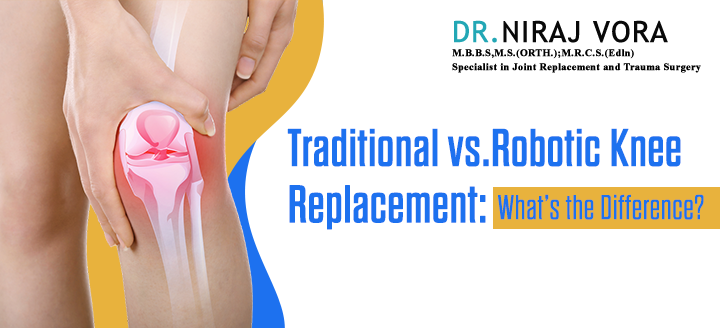Knee pain can affect everything. It limits how far you walk, how well you sleep, and how much you enjoy daily life. When medicines stop helping, knee replacement becomes the next step. But now there are two main options: traditional surgery or robotic-assisted surgery. Both aim to improve movement, but the method and outcome can be different.
How Traditional Knee Replacement Works
In a traditional surgery, the surgeon uses fixed tools to cut and shape the bone. They work using guides and their training to place the implant. This approach has helped many people over the years. But results may vary depending on how well the joint is aligned during surgery.
A joint replacement surgeon in Mumbai will plan the procedure with X-rays and physical measurements. The implant is placed based on these plans and adjusted during surgery. Accuracy depends on the skill and judgement of the surgeon.
What Is Robotic Knee Replacement?
Robotic-assisted surgery gives the surgeon more control. It works on a system that creates a 3D model of your knee. This assists the surgeon to know precisely where and how to cut each cut. It enhances the implant fit and cushions the soft tissue of the joint.
In a robotic knee replacement, the doctor remains the one to do the surgery. The robot does not work alone. It guides and supports, helping the surgeon make better decisions in real time.
A robotic joint replacement surgeon in Mumbai uses this support to place the implant with more precision. That leads to a smoother joint and faster recovery.
Traditional and Robotic: What Sets Them Apart
The two surgeries are meant to relieve pain and enhance movement. The end is identical, the road is not. The following are the main differences.
Surgical Planning
- Conventional: X-rays and physical inspection based
- Robotic: Depending on a live 3D model of your knee
Fit and Alignment
- Conventional: It relies on visual approximations in surgery
- Robotic: Provides precise positioning with digital guidance
Soft Tissue Handling
- Conventional: Can include additional knee-cutting
- Robotic: More accurate targeting of the area
Recovery Speed
- Conventional: Treatment can be slow
- Robotic: Faster healing due to less harm
Risk of Errors
- Conventional: Greater possibility of variation
- Robotic: More accuracy, less likelihood of implant complications
How CORI Technology Changes the Game
CORI is a handheld robotic system. It scans the joint during surgery. There is no need for a CT scan before the operation. That means less wait time and no extra radiation. CORI robotic total knee replacement gives real-time data to the surgeon. The implant fits better. There is less pressure on nearby tissues. Pain is reduced. Recovery is faster.
CORI robotic-assisted knee replacement is now available in Mumbai. Many patients choose it to avoid delays and shorten their hospital stay. It is also known for giving more balanced results after surgery.
Choosing the Right Surgeon in Mumbai
The best joint replacement surgeon in Mumbai will talk to you about both options. They will explain the risks and benefits clearly. Ask if they have experience with robotic systems like CORI. Ask how many surgeries they have done with it.
The best robotic knee replacement surgeon in Mumbai will offer a clear plan before surgery. They will also support you during recovery. Look for a surgeon who explains things in a way you understand.
What Should You Do Next?
Traditional methods still work well. Many patients recover fully and return to daily life. But if you want a faster recovery, a better joint fit, and reduced chances of complications, robotic support offers more control.
In the traditional vs. robotic knee replacement debate, the answer depends on your age, activity level, and goals. Speak to your surgeon. Ask questions. Choose what helps you move better and live pain-free again.

